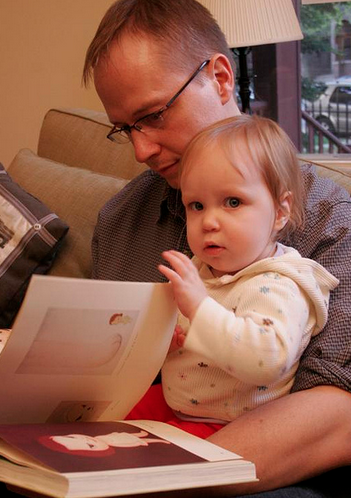
Image courtesy of Flickr (CC)
“Last week,” Cleveland Clinic pediatrician Dr. Deb Lonzer shares, “my kindergartener came home from school saying that one of his classmates ‘stuck her finger down her throat and made herself puke’.” Eating disorders begin much earlier than we think. Obesity has become much more prevalent in children and adolescents over the last decade. As a result, parents, educators, and the media discuss exercise and weight loss more than ever before. Unfortunately, all this talk doesn’t necessarily lead to healthier kids. We don’t know exactly what causes eating disorders; they appear to be caused by the perfect storm of physical, developmental, and emotional factors. Does this little girl have an eating disorder? Dr. Lonzer says, “It’s a possibility; but, it’s more likely that she’s copying the behavior of an older sibling or parent in her house.”
While most people generally assume that eating disorders primarily affect adolescent girls and young women, boys and young men are increasingly afflicted as well.
Are you concerned that your child may have or develop an eating disorder? Dr. Lonzer recommends watching for some of the following behaviors and symptoms of eating disorders:
- Eating tiny portions or refusing to eat
- Intense fear of being fat
- Distorted body image
- Strenuous exercising (for more than an hour)
- Hoarding and hiding food
- Eating in secret
- Disappearing after eating—often to the bathroom
- Large changes in weight, both up and down
- Social withdrawal
- Depression
- Irritability
- Hiding weight loss by wearing bulky clothes
- Little concern over extreme weight loss
- Stomach cramps
- Menstrual irregularities—missing periods
- Dizziness
- Feeling cold all the time
- Sleep problems
- Cuts and calluses across the top of finger joints (from sticking finger down throat to cause vomiting)
- Dry skin
- Puffy face
- Fine hair on body
- Thinning of hair on head, dry and brittle hair
- Cavities, or discoloration of teeth, from vomiting
- Muscle weakness
- Yellow skin
- Cold, mottled hands and feet or swelling of feet
If you suspect that your child might have an eating disorder, you should contact your pediatrician right away.
If you are concerned that your child might be overweight, provide healthier snacks and increase their activity levels. Parents should never, ever talk to their children about their weight, or discuss it with other adults when the children are around. Even when kids don’t appear to be listening, they are. If you are on a diet, that’s your business. You can explain that you didn’t buy Oreos this week because they don’t make you feel as good as an apple, but keep the diet and weight-loss talk between grown-ups.




